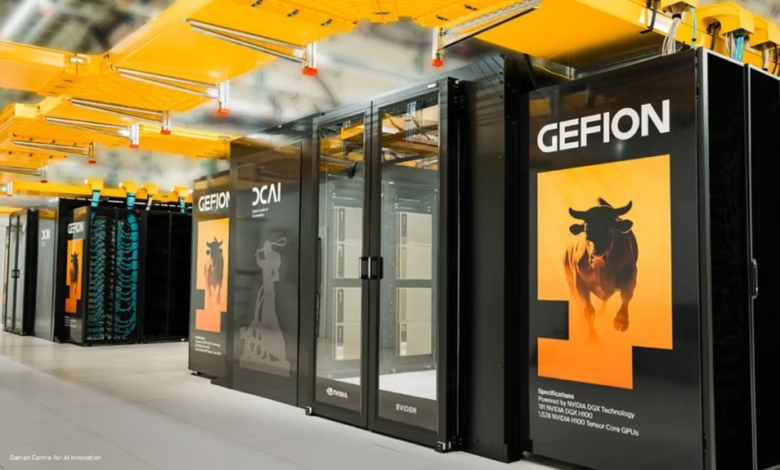Nvidia: AI Systems Could Unlock $50T Market Potential

▼ Summary
– Nvidia’s CEO highlighted a $50 trillion market opportunity for physical AI systems in industries like factories, transportation, and humanoid robotics.
– Nvidia’s automotive business is projected to hit $5 billion this year, with potential to reach $1 trillion as autonomous driving expands, though only 1% of current cars are L2+ capable.
– Nvidia announced full production of its Drive AV software, starting with Mercedes Benz, and partnerships with Siemens and Deutsche Telekom for an industrial AI cloud in Germany.
– The company is releasing Isaac Sim as open source and upgrading its Omniverse platform with Neural Reconstruction to aid AV developers.
– Nvidia is collaborating with European nations and companies to deploy sovereign AI infrastructure, including a Germany-based industrial AI cloud with 10,000 GPUs.
Nvidia’s AI technology is poised to transform multiple industries, with CEO Jensen Huang projecting a staggering $50 trillion market potential across manufacturing, transportation, and robotics. Speaking at the Nvidia GTC Paris event, Huang outlined how the company’s physical AI systems are driving innovation in these sectors, with autonomous vehicles alone representing a trillion-dollar opportunity.
The automotive division is on track to generate $5 billion this year, yet only 1% of current vehicles feature advanced driver-assistance capabilities, highlighting massive room for growth. Nvidia’s full-stack Drive AV software has entered production, debuting in the Mercedes-Benz CLA sedan. This platform powers everything from interactive dashboards to AI-driven autonomous navigation using onboard supercomputers.
Beyond automotive, Nvidia is making strides in industrial AI through collaborations with Siemens and Deutsche Telekom to establish an AI cloud in Germany. The company’s Halo safety system has earned recognition from top certification bodies, while new simulation tools aim to push autonomous driving and robotics forward. In a move to foster innovation, Nvidia will open-source its Isaac Sim code this week.
European automakers are rapidly adopting Nvidia’s technology. Volvo’s upcoming ES 90 sedan and Jaguar Land Rover’s next-generation fleet will integrate the Drive AV platform, with JLR’s rollout scheduled for next year. These partnerships stem from years of joint development.
Nvidia is also enhancing its Omniverse simulation platform with Neural Reconstruction, simplifying development for autonomous vehicle engineers. Rev Lebaredian, VP of Omniverse, emphasized the rising demand for physical AI in factories and robotics, citing an impending global labor shortage of 50 million workers. Humanoid robotics, he noted, will play a crucial role in addressing this gap.
Several European nations, including France, Italy, Spain, and the UK, are investing in sovereign AI infrastructure. Partners like Mistral AI, Orange, and Telefónica will deploy over 3,000 exaflops of Nvidia Blackwell Systems to bolster domestic AI capabilities.
The company also unveiled expansions to its DGX Cloud Lepton platform, now offering GPU access through a broader network of cloud providers. Additionally, Nvidia is working with European and Middle Eastern partners to optimize large language models, accelerating enterprise AI adoption.
In healthcare, Nvidia has teamed up with Novo Nordisk to speed up drug discovery using AI, leveraging the Gefion sovereign AI supercomputer. Meanwhile, the collaboration with Siemens aims to revolutionize industrial AI, helping manufacturers improve efficiency and adapt to market shifts.
Rounding out its announcements, Nvidia revealed plans for the world’s first industrial AI cloud in Germany. This facility will house 10,000 GPUs, including DGX B200 and RTX PRO servers, empowering manufacturers with cutting-edge tools for design, simulation, and digital twin applications.
(Source: VentureBeat)

